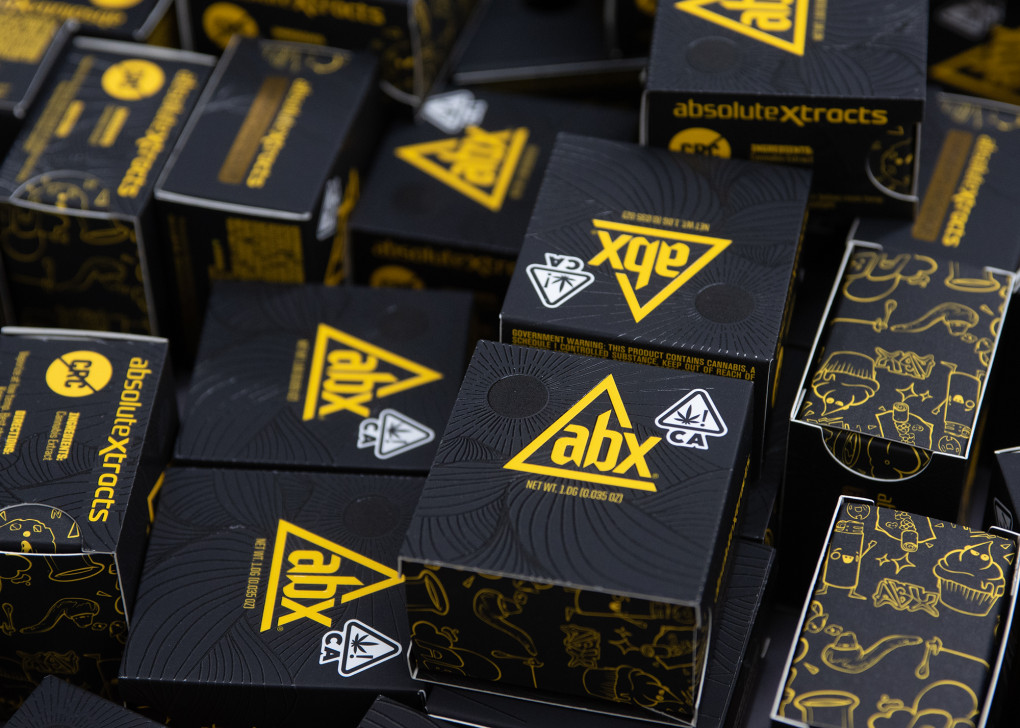Share this post
Categories
WTF is CRC Technology?
November 2, 2022

Are you dabbing or vaping CRC extracts? Are the top-shelf concentrates or cartridges you are inhaling made with CRC tech? Do you even know what CRC stands for? Does its flavor profile seem natural to you? CRC tech stands for the color remediation column technology that is used by more than three-quarters of the cannabis industry making consumable butane hash oil.
CRC tech is now widely used throughout commercial cannabis since its introduction to the industry in 2017. CRC technology is typically used to filter out any heavy metals, residual pesticides, excess flavors, and byproducts created by the blasting process of high-quality cannabis concentrate.

It is fair to say that over 75% of legal cannabis production labs making BHO products have some form of CRC procedures in the processes. Research on the positives and negatives of CRC tech is still extremely limited. As more understanding of the benefits and harms of CRC continues to grow, the debate about whether its final product is safe or not continues to intensify.

How CRC Technology Works
The CRC process happens after extraction and before solvent recovery to purify the final concentrate or oil. CRC technology uses a secondary filtration column containing various forms of media. This process is used to filter dark colors out of oils made with ethanol or hydrocarbon extraction systems. CRC equipment is usually placed between the starting material column and the collection container.
During the extraction process, the extracted material is filtered through the media within the column. This process can potentially remove residual carotene, chlorophyll, lipids, lycopene, pheophytins, xanthophyll, and a plethora of other toxins.
This is where an extraction lab can select which absorbent powders and substances they will use to filter the concentrate. These medias include Magnesol, silica and even T5 clay are used to remove color and impurities in the cannabis extract. Some of the other media that can be used for filtration often include a proprietary added mix of activated charcoal, bentonite clay, and even diatomaceous earth.
Activated carbon/charcoal is made up of microscopic holes and carbon atoms. A carbon molecule’s electrostatic attraction draws other molecules. Carbon filters are commonly used with activated silica gel to remove chlorophyll.
Activated bleaching earth or bentonite clay is used to decolorize a marijuana concentrate. These filter media are the final layer of filtration media that help remove the color when all other impurities have been removed.
Diatomaceous earth is a type of naturally occurring, soft rock that has a light and powdery consistency. Diatomaceous earth provides extraction technicians with fine filtration.

The Color of Flavor
CRC technology can also be used to brighten up the color of cannabis oil, as well as separate and remove nasty odors, residual contamination, and even pesticides. This process changes the viscosity and even lightens the appearance of cannabis oil. CRC technology allows extractors to shift a low-quality hash oil’s color from a dark brown or amber shade to a lighter color, gold or even clear. Because of this, the color of an oil extract technically doesn’t speak for the potency or overall quality.
To some extent, production labs can run their own method right now. This underlines the importance of knowing a company’s approach to producing its concentrates. The overall quality of your concentrates and oil will not only depend on the farms they work with. The quality of the starting material matters, all the way to how their production labs blast their concentrates and oils.
Since each cannabis legal state writes its regulations, there is no standard or regulated procedure for CRC. The way most states wrote their regulations with lab testing products, labs generally are not required to test for CRC media contamination. Most states do not even require cannabis companies to disclose if they are using CRC tech.

The Potential Dangers of CRC
Although residual CRC media is the main concern, it is known that one potential negative of CRC is its potential to remove cannabinoids and terpenes. This of course does not apply to companies only running distillate, since that process is mostly THC-focused, and already light on terpenes.
Since most of the CRC materials are ‘generally recognized as safe’ by the Food and Drug Administration, most people don’t give this a second thought. But GRAS only applies to food products being digested. It doesn’t cover the inhaling of burned or heated products or their effects on the respiratory system.
There are a few long-term studies on miners of bentonite clay and diatomaceous earth. Miners inhaling a high concentration of this fine sand on their daily workday has massively toxic results for the body over time. Wreaking havoc on the respiratory system.
Silica is a key element in removing the very darkest hues in an extract. It has absorbent and desiccant characteristics used to remove polar molecules from petroleum release sites. Activated silica gel filters out carotenoids, chlorophyll, and other hydrophilic substances. However, silica gel also has the same potential to hinder your respiratory system.
Even though bentonite clay has been used in processing food oils for years, the FDA has issued warnings that it is known to have elevated lead levels.
Research on the potential dangers of CRC technology is very limited. We have to look at ancillary studies involving the medium used in CRC tech to grasp how it can be harmful to us.
To enjoy true-to-flower, real cannabis taste and effects, look for concentrates like ABX sauce+diamonds and badder, or ABX ceramic-core sauce cartridges, all made without using CRC extraction. Each concentrate captures the unique strain profile of terpenes and cannabinoids that are derived from fresh, California-grown flower to delight cannabis enthusiasts and conoseurs alike. Taste the difference of real cannabis flavor and strain-specifc effects with ABX.
